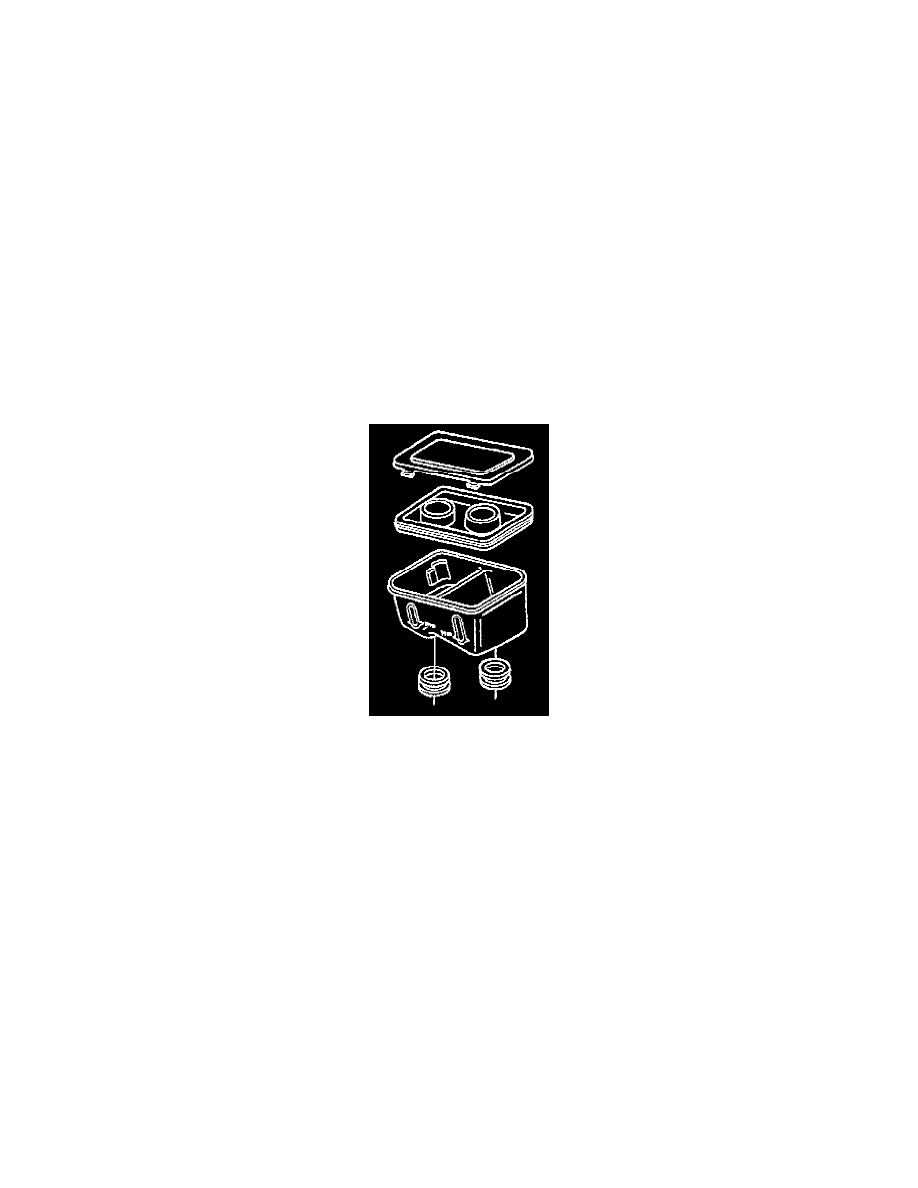Hombre XS Space Cab L4-2.2L CPC (1997)

Brake Master Cylinder: Service and Repair
Brake Master Cylinder
Bench Bleeding Brake Master Cylinder
NOTE: The purpose of bench bleeding the master cylinder is to remove air from it prior to installation. This reduces the amount of bleeding needed
after it is installed on the vehicle.
1. Plug the outlet ports and mount the master cylinder in a vise with the front end tilted slightly down.
2. Fill the reservoir with clean brake fluid.
3. Using a tool with a smooth rounded end, stroke the primary piston about 25 mm (1 inch) several times.
^
As air is bled from the master cylinder, the primary piston will not travel the full 25 mm (1 inch) stroke.
4. Reposition the master cylinder in the vise with the front end tilted slightly up.
5. Again stroke the primary piston about 25 mm (1 inch) several times.
6. Reposition the master cylinder in the vise to the level position.
7. Loosen the plugs one at a time and push the piston into the bore to force the air from the cylinder.
^
To prevent air from being sucked back into the cylinder, tighten the plug(s) before allowing the piston to return to its original position.
8. Fill the reservoir.
^
Normal bleeding procedures should be followed after the master cylinder is installed.
Removal and Installation
Composite Master Cylinder Reservoir
REMOVE OR DISCONNECT
^
Apply the parking brake.
1. Brake pipes.
^
Cover the ends of the pipes to prevent dirt from entering the system.
2. Nuts.
3. Master cylinder.
INSTALL OR CONNECT
^
Before installation, refer to Bench Bleeding.
1. Master cylinder.
2. Nuts.
^
Tighten Nuts to 36 Nm (27 ft. lbs.).
3. Pipes.
Tighten:
^
Pipe fittings to 27 Nm (20 ft. lbs.).
^
Bleed the brakes. Refer to Hydraulic Brake System.
^
Release parking brake.
Overhaul
